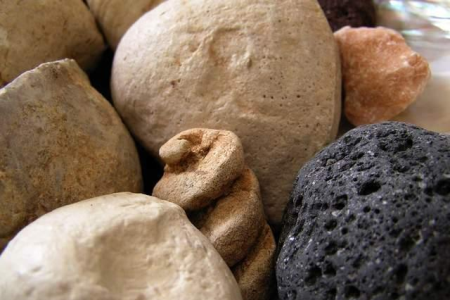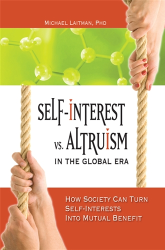
Following Adam’s shattering, each piece in the desire to receive begins to feel like an independent self, separated from its environment and wishing to absorb from it. This desire to absorb, the pulling force, or gravity—the physical parallel to the desire to receive—caused the first clusters to form in the universe, which later became the substance of the first galaxies in the universe.
As space and gravity fields created more structured forms of the desire to absorb (meaning the desire to receive), particles appeared. The absorption process continued and stars were born with planets surrounding some of them. Thus, gravity, the weakest force in Nature, created the infrastructure of the entire universe, just as Stage One of the four developmental stages of the primordial desire in creation, the weakest desire to receive, created the infrastructure for the four Stages and all the spiritual worlds that followed.
As in Stage One, the desire to receive in the corporeal inanimate consists primarily of a wish to secure its own persistence, to sustain itself. Its only relation to others is that it resists any attempt to break, dissolve, or otherwise change it. Yet, as a result of the inanimate level’s aspiration to maintain its own persistence, some particles “discovered” that they could best secure their future by collaborating with other elements.
Unlike Darwin, Kabbalah Asserts ‘No Coincidence’
Unlike Darwin’s theory of evolution, Kabbalah asserts that there is no coincidence. Particles do not really “discover” or happen to collaborate and subsequently benefit from doing so. This would imply that Nature is purposeless, random, that there is no predetermined goal at the end of the process. Instead, Baal HaSulam explains (in “Preface to the Wisdom of Kabbalah,” The Study of the Ten Sefirot, and in other places) that since our world is the last in a series of cause- and-effect events, the desires that appear in our world already contain (albeit not consciously) recollections of previous states within them, since they are their offshoots. Hence, the desire to receive in this world already has a recollection of the Four Stages, the Partzuf, and all the spiritual worlds. As a result, the preparation, the set-up for discovering the benefits in collaboration, pre-exist in all the levels of desires in this world. This is what allows them to “miraculously” discover the benefits of “negotiating into harmony,” as Sahtouris put it.
Most physicists agree that particles did not need much time to “discover” the benefits of collaboration. A publication by the Haystack observatory, a research center at MIT, explains, “When the universe was 3 minutes old, it had cooled enough for these protons and neutrons to combine into nuclei.” However, to develop further, they had to forge additional collaborations, which manifested in the form of electrons. These balanced the positive charge of the nuclei. This is how the first atoms appeared.
To those particles, being part of an atom—and thus yielding their own interest in favor of the interest of the atom—was all the correction they needed. In acting for the good of the system they lived in instead of for their own good, they stopped being self-centered and became system-centered. They were now “aware” of their environment and how they could contribute to it. In doing so, they became “altruists,” albeit for the selfish reason of perpetuating their own existence.
The “reward” for particles that excel in giving to their environment is the creation of a strong environment, meaning stable atoms. This guarantees their future existence.
Moreover, because atoms need all their particles to maintain themselves, the atoms themselves protect the particles within them. Thus, by yielding their self-interest in favor of the interest of their atoms, particles gain the entire system’s interest in the well being of these atoms. This “deal” proved so successful that “Moments after the Big Bang, protons and neutrons began to combine to form helium-3 and other basic elements,” said Robert Rood of the University of Virginia, as quoted in a release by the National Radio Astronomy observatory. Thus, the first minerals emerged.
Why Cells in the Human Body Is an Example for People in Humanity
The human body is possibly the most vivid example of the modus operandi of yielding self-interest before the interest of the host system in return for the system’s protection. In the human body, as in any organism, each cell has a particular role. For the organism to persist, each cell must perform its function to the best of its ability and replace the goal of maintaining its own life with the goal of maintaining the life of its host organism. If a cell begins to act contrary to that principle, its interests will soon clash with those of the body and the body’s defense mechanisms will destroy it. Otherwise, it is likely to create a tumor of insubordinate cells that strive to consume the body’s resources for their own benefit. When such a process occurs, we diagnose it as “cancer.”
If the cancer wins, the body dies and the tumor dies along with it. If the body wins and the cancer dies, the body persists, along with the cells of the organ that did not become malignant, and the self-centered cells are extinguished. This is Nature’s failsafe mechanism for ensuring that self-centered systems will not exist. Here, too, there is nothing miraculous; it is simply that self-centered mechanisms invariably consume themselves to extinction because they end up consuming their food supply.
Thus, it is in the interest of all cells in the body to dispose of the tumor. Put differently, to guarantee the survival of elements in a system, the elements in that system must cater to the well-being of the system before they cater to their own well-being. In return, the system will cater to their well-being and provide for their survival.
The principle explained just now is valid not only for particles, atoms, and organisms, but for all of life. By applying it, all elements in Nature learn to yield their self-centered natures to an altruistic nature, which considers the good of the collective before its own good.
Thus, returning to our topic of observing the early universe, once particles joined to create atoms, atoms began to bond, thus creating the first molecules. These adhered to the same rule, and the molecules that survived were those in which the atoms were tightly connected, just as with atoms, yielding their self-interest before the interest of their host systems—the molecules.
In this entire process, there is no freedom of choice. An atom or a molecule cannot choose to not be created, since the elements that constitute it find it in their best interest to form it in order to best protect their interests. Yet, by creating molecules, atoms accomplished something far more significant than protecting themselves and the particles that created them. Like particles, they built a system before which they could yield their self-interest, and by so doing, atoms transformed from being self-oriented to being system-oriented, meaning altruistic.
In this way, another layer of the inanimate level of desire to receive was corrected. And although there was no free choice in this correction, the altruistic modus operandi is all that is required of minerals to be considered corrected. As Stage One did not have any free choice in its evolution, the inanimate has no free choice in its evolution; it simply works to ensure its persistence as best it can.
Interestingly, Darwin’s theory reflects almost the same pattern in its principle of natural selection. One difference between Kabbalah and Darwinism is that what Darwinism defines as stable molecules vs. unstable ones, Kabbalah defines as balanced molecules vs. unbalanced ones. Balanced molecules support the atoms that comprise them, and the atoms equally support their molecules.
In The Selfish Gene, Richard Dawkins—one of Darwin’s most renowned contemporary proponents—describes the process of molecular evolution: “The earliest form of natural selection was simply a selection of stable forms and a rejection of unstable ones. There is no mystery about this. It had to happen by definition.”
Dawkins’ observations are congruent with those of Kabbalah. In Kabbalistic terminology, a stable molecule is one whose atoms have yielded their self-interests in favor of the interests of the molecule. Thus, Dawkins’ “stable forms” are synonymous with Kabbalah’s “corrected molecules,” in which atoms have become “altruistic.” Conversely, in unstable (uncorrected) molecules, one or more of the atoms remained focused on its own interest.
Following the same procedure as particles and atoms, molecules began to congregate and create what biologists refer to as “molecular interactions,” or “bonds.” As with molecules, interactions in which molecules dedicated themselves to the strength and well-being of the bond prospered, and those whose molecules were only partially supportive of their bond disintegrated.
Many forms of molecular interactions exist in nature, but less than four billion years ago, one particular interaction marked the shift between the inanimate stage on Earth (and perhaps in the universe) and the vegetative one. This special aggregate of molecules was given the name, “Deoxyribonucleic acid,” otherwise known as DNA.
In atoms, particles assume different roles: some form the nucleus and some form the shell, for example. Similarly, in molecules, atoms assume different roles and must adhere to rigid forms of connections. And finally, in molecular interaction, each molecule plays a different role.
But with the appearance of DNA, things began to change. DNA is not yet another structure made of different molecules that form a structure. It is a structure that can interact with other structures, where each structure is assigned a different function. These, combined, serve the good of the structure. In biology, these structures are called “cells” or “unicellular organisms” and they constitute the most primitive form of life.
You could argue that essentially, these organisms function much the same as atoms, molecules, or molecular structures introduced before. But the unique structure created around the DNA allows for two hitherto nonexistent functions to occur:
1) DNA is the first known structure in nature that can replicate itself, as well as the molecular structures that support it.
2) Cells are the first structures that systematically interact with their environment. They absorb nutrients from their environment, process them to extract the energy they need for survival, and then secrete the waste. Moreover, cells can repeat this process accurately so many times that they can actually change their environment.
There are many definitions of life. To be on the safe side, I will choose the one that Encyclopedia Britannica offers: “Matter that shows certain attributes that include responsiveness, growth, metabolism, energy transformation, and reproduction.” The first cells, named “prokaryotes,” had all those attributes and were a direct evolution of molecular interaction. Thus, the beginning of life as we know it was prompted by the same law by which all systems achieve balance and sustainability—their constituents yielding their self-interests before the interest of their host systems, in return for the system’s care for them.
 “How to Understand Still Life in a Way that Prepares You for the Next Stage of Evolution” is based on the book, Self Interest vs. Altruism in the Global Era: How Society Can Turn Self Interests into Mutual Benefit by Dr. Michael Laitman.
“How to Understand Still Life in a Way that Prepares You for the Next Stage of Evolution” is based on the book, Self Interest vs. Altruism in the Global Era: How Society Can Turn Self Interests into Mutual Benefit by Dr. Michael Laitman.
